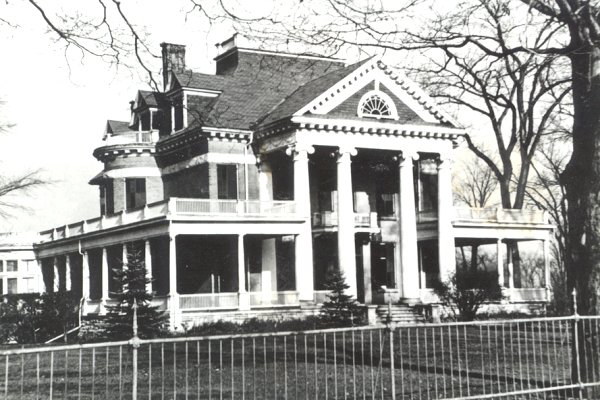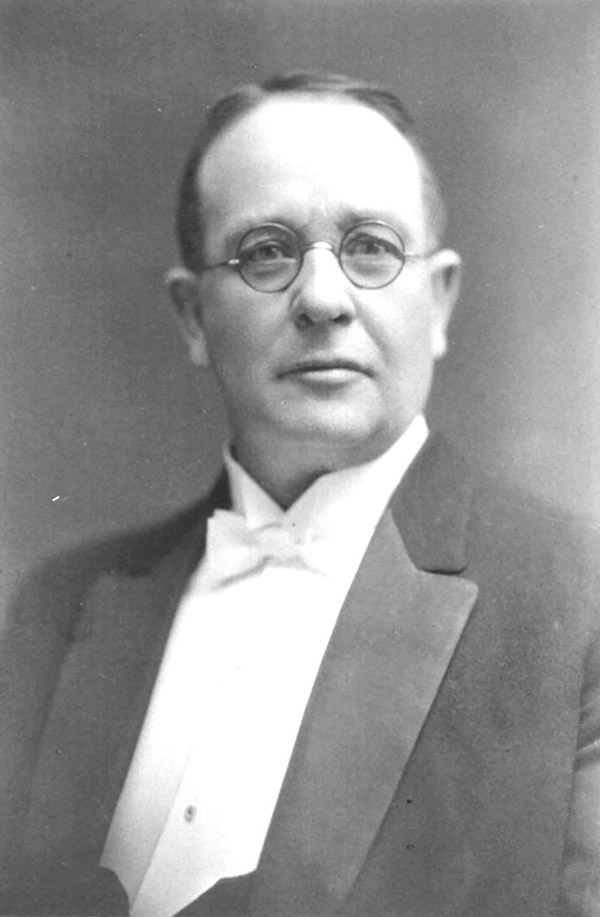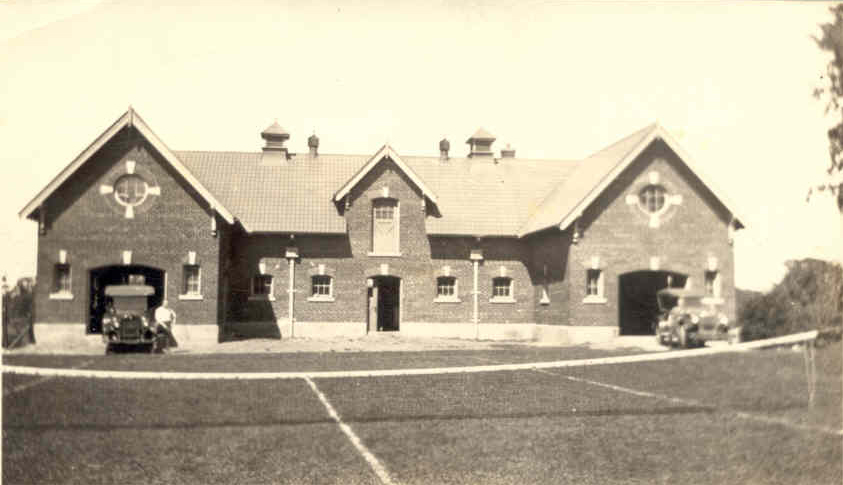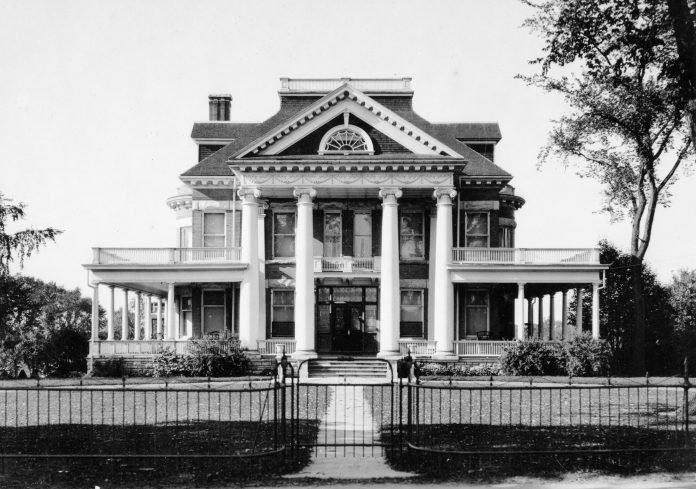The Canadian Bank Note Company on Richmond Road at Kirkwood is a familiar building to most in Ottawa. A holdover from the industrial days of this section of Richmond Road (which also once included R. L. Crain printers, a Pepsi plant, and General Electric), the whispers of redevelopment of this large property signal the potential end of another era.
Yet it is an earlier era for this property, which is of even more interest: large stately homes on what was the rural boulevard Richmond Road.
Where the Bank Note building stands today was once the site of one of Ottawa’s most impressive homes. However, in a move symbolic of the post-WWII period when rapid expansion and growth of new industries and technology were king (and heritage and history became passé), a mansion of incredible character, built by one of the community’s most prominent and passionate individuals was demolished amidst the tears of the workers tasked with the difficult responsibility of pulling it down.

The piece of land situated between Kirkwood and Patricia, from Carling north to the Ottawa River passed through many hands in the 19th century. Most notably, Peter Aylen “King of the Shiners” owned the property from 1821 to 1837 and became its first resident, building several structures (one of which remains today, the tin-roofed Aylen-Heney house on the south side of Richmond near Kirkwood). However, it was in 1854 that Bytown leather merchant John “Buffalo” Heney acquired the land, where his family would remain for nearly 100 years.
Heney built a sizable two-storey stone house, which he called Syringa Cottage on the north side of Richmond Road, where his family would reside intermittently until the late 1800s.
After “Buffalo” Heney passed away in June of 1896, his son Frederick Augustus Heney took over ownership of the property. Fred was one of Nepean Township’s most prominent citizens. During his life he owned substantial real estate in Nepean and Ottawa, was President of Mortimer’s publishers, was a high-ranking Mason (he helped establish the Temple on Churchill Avenue), Nepean High School Board member (helping establish Nepean High), was Reeve of Nepean Township, Warden of Carleton County, chairman of the Ottawa Suburban Roads Commission, and President of the Ottawa Board of Trade. In fact, Kirkwood Avenue was called Heney Avenue until 1941.

During 1898-1899, Heney oversaw construction of his palatial 33-room mansion, built almost in the centre of where the Bank Note stands today. Once completed, he demolished old Syringa Cottage, which was adjacent to the east. He also replaced the old stone wall surrounding the property and replaced it with an iron fence. (With a nod to history, the Bank Note continue to maintain a new iron fence of similar design.)
The three-storey home was built in a colonial style, featuring giant pillars, gabled windows, large wrap-around verandas and balconies, a circular conservatory, dormers, sunrooms, and eight fireplaces. The main stairway was made of oak and was six feet wide. Rooms were panelled partially or in full in oak and birch.
Outside to the west was an old stone carriage house and stable which dated back to 1832. It was destroyed by fire in 1914 and nearly burned down the mansion as well. Heney rebuilt a large two-storey brick garage and stable building in its place with room for four cars and five horses. The garage included a service pit and a manually operated lift to hoist hay to the second storey.

The extensive grounds also featured tennis courts and a field for baseball and other sports.
When Fred Heney passed away on February 12, 1946 at the age of 76, he left behind an estate valued at just under $1M.
Meanwhile, the Canadian Bank Note Company, which had been located since 1897 at 224 Wellington Street near Bank, had announced in April that they had sold their building to the expanding Bank of Canada. On June 24 it was announced that they would build a new plant on eight acres of the Williams farm in what is now Old Ottawa South, fronting Riverdale Avenue where Echo Drive intersects. However, local residents reacted quickly, convincing Ottawa council to pass a bylaw preventing the construction of commercial buildings in the neighbourhood. Council desperately wanted to keep the Company (and the sizable property tax it would generate) within Ottawa’s borders, but no suitable locations could be found.
In fact, under terms of its ancient contract with the federal government, the Bank Note Company was required to remain within the Ottawa city limits, but this was modified in order for the company to relocate to Nepean, who was happy to welcome the firm. On October 7 1946, it was announced that the Bank Note Company was negotiating to purchase the Heney property, and in late November, the purchase was made official.
Demolition began on the Heney mansion in January 1947. The Baker Brothers Company was contracted to raze the building, which was not an easy task for those involved, both due to the complexity of the job, and also the sadness in destroying a landmark home. The destruction of such an impressive house in peak condition was described by the Citizen as “unpleasant to witness” and “would bring tears to the eyes of anyone who loves old homes.” A fire burning in the downstairs library while a reporter visited on one of the first days of demolition was fuelled by sections of the grand banisters.
However, much of the house lived on. Baker Brothers fervently salvaged many features of the home and the materials were resold to individuals in the area who were building houses in the growing neighbourhood of Hampton-Iona.
Everything from light fixtures to the bathtubs to the heating equipment was sold throughout the winter of 1947. This is how the Ottawa Journal reported it on January 30, 1947: “… the fine old wood, the gables, the floors and even the bricks are being bought up wholesale by contractors and residents of Laurentian View and nearby Heney Park. Into new homes go the old oak china cabinets, the antique pieces of exquisite furniture, the delicately carved gables and woodwork, and they take with them the atmosphere of a never-to-be-forgotten era in the Ottawa district… Snug semi-bungalows of Heney Park, and the blue-roofed bungalows of Laurentian View may benefit from the added grace imparted by the old home’s discarded timbers. And although travellers will not see the old landmark in its familiar place, the house will be there – if only in some of the new homes across the way.”
On May 14 1948, the Bank Note Company took out a building permit for their new $750,000, 118,000 square foot plant. It was completed in August of 1950.
It is unfortunate that the Heney name has become nearly forgotten in the neighbourhood, but it’s a travesty that the old mansion was lost so long ago. It would certainly be the centrepiece of Kitchissippi if it was still standing today.
Dave Allston is a local history buff who researches and writes house histories and publishes a blog called The Kitchissippi Museum. His family has lived in Kitchissippi for six generations. Do you have stories to share about the area? We’d love to hear them! Send your email to stories@kitchissippi.com.
